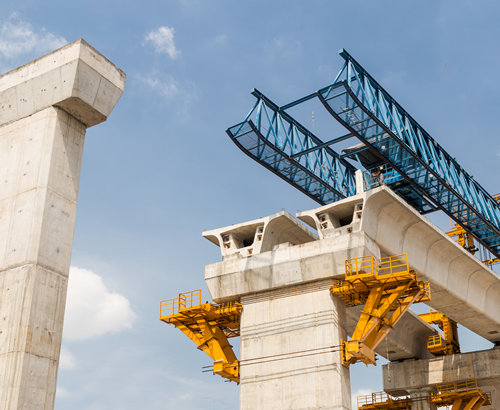Canada: Looking Forward in 2018 With the Recession in the Rearview Mirror
As the Canadian engineering and construction (E&C) industry enters 2018, we glimpse the recession in the rearview mirror and wonder how the many unknowns related to pipeline construction, oil prices, the North American Free Trade Agreement (NAFTA) and government infrastructure spending will unfold during the next 12 months.
The Canadian economy is expected to stabilize and improve, with a forecast 3% growth in structures and engineering projects. Canada’s unemployment rate fell to its lowest at 5.7% (the lowest since 1976), while the Statistics Canada monthly labor force survey reported a year of growth across all industries.
Statistics Canada is also forecasting a nearly 3% increase in Canada’s gross domestic product this year, and business spending on building and engineering—which reached $155 billion in 2014—is expected to be just under $100 billion this year.
Michael Burt, the Conference Board of Canada’s director of industrial economic trends, characterized 2017 as a “bottoming out” year and strikes a note of cautious optimism for the country’s construction sector.
“We saw two—and if our forecast holds for this year—probably three—consecutive years of decline in spending on construction activity in Canada. But we seem to be reaching a nadir in terms of the downturn in the industry over the last couple of years. We actually see growth in the range of 3% going forward into 2018 in terms of spending on structures and engineering projects.”
Top Canadian construction trends for 2018, as listed by On-Site’s Saul Chernos, will include:
- Aging Workforce
- Relentless Technological Change
- Globalization-“Gobble-ization”
- One-Stop Shopping
- Deteriorating Designs
- Deteriorating Payment Practices
- Procurement Helter-Skelter
- Risk Adversity
Thanks to a stabilizing national economy, retention plans as well as compensation and incentive plans should all become strategic priorities for Canadian E&C firms in 2018 and 2019. After several years of decreasing wages, industry stakeholders are re-evaluating their wages and benefits and weighing their options across all market sectors.
When developing their strategic priorities for the coming year, E&C firms should also pay particularly close attention to the level of capital that’s leaving the industry—along with the people who know the industry best. Here at FMI, we expect to see significant and sustained high levels of merger and acquisition (M&A) activity as firms are sold or continue to expand their footprints, driving more industry consolidation and reshaping the business landscape (see “FMI’s 2018 Overview” for more details). This, in turn, will accelerate the bifurcation of the industry into a combination of very large, complex, sophisticated, multimarket-sector businesses across different geographies, as well as the smaller niche firms that are more focused in scope, geographic reach and market influence.
As an industry, we can’t just ignore the technology trends that are impacting operating costs and job site performance. For example, we expect to see more than $500 million of new, private capital being designated to investment funds that back startup firms focused on innovative construction technology or service solutions to address the productivity and risk issues in our industry. This is just one sign of the times and an indicator of how both new and established companies will have to embrace new business models that help them be more productive, efficient, innovative and creative in their design, manufacturing and construction approaches.
When developing strategic priorities for the year ahead, E&C firms should strive to stay focused on the long-term view while also taking advantage of the “now,” with the understanding that this will require good balance, solid leadership, deliberate succession planning and a holistic approach to business growth. Combined, these factors will help companies fully leverage the opportunities that are on their plates right now while also making the most of future prospects.



